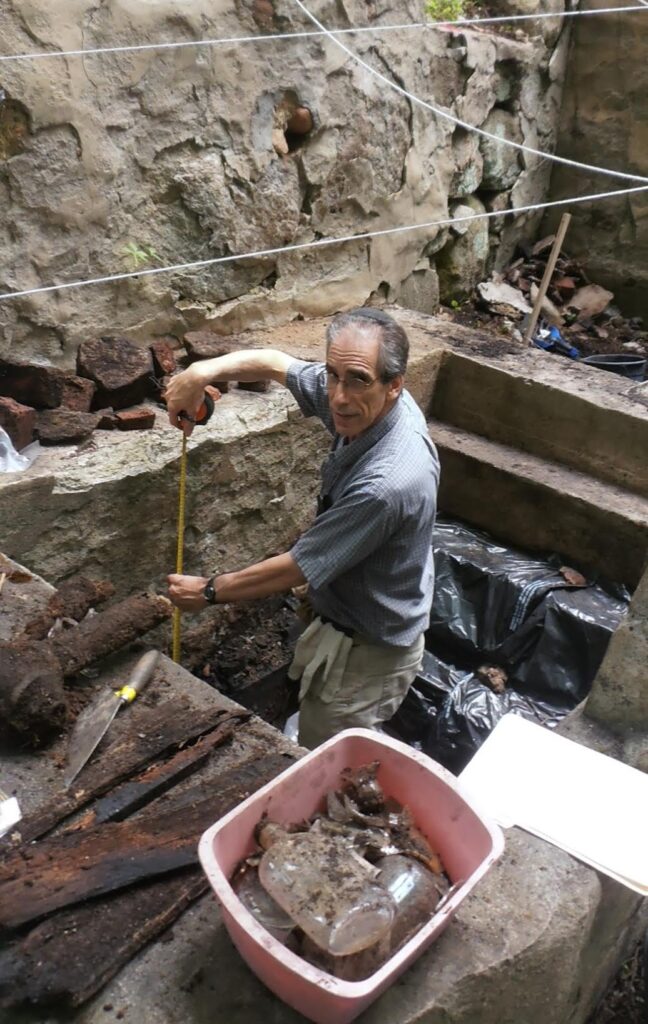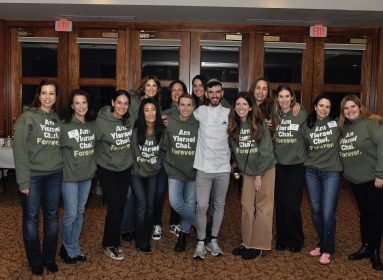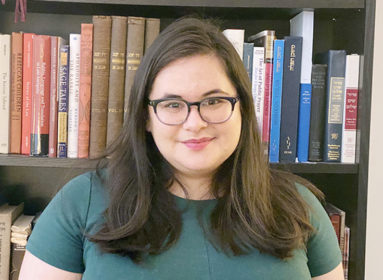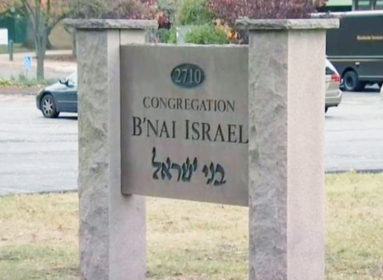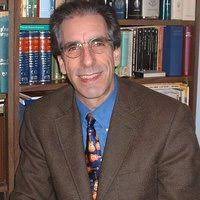
By Stacey Dresner
In his 40 years as professor of Hebrew, History and Judaic Studies at the University of Connecticut, Dr. Stuart Miller has shared his knowledge of rabbinic Judaism and Greco-Roman Palestine with thousands of students and mentored numerous graduate students. He served as academic director of the UConn Center for Judaic Studies and Contemporary Life, helping to build the program that exists today.
Miller also has written a number of books, and articles in countless academic journals. After he wrote a book about the ancient Israeli city of Sepphoris, he led a UConn team an archeological dig in the city in the Galilee.
So what is the brilliant Talmudic and Jewish history scholar planning to do now after his retiring from UConn this past July?
“I am looking forward to having more time to devote to music during retirement,” shared Miller. “I am a lifelong fingerstyle and classical guitarist. I recently spent time at Music Mountain with a group of string players and the Arianna Quartet, learning much about ensemble playing.”
Miller is also excited to be able to spend more time with his six grandchildren — “all within striking distance of West Hartford,” where he has lived with his wife Laura since they arrived in Connecticut 40 years ago.
Miller is already working in a sequel to his Sepphoris book, and will begin to write another with the help of a grant from UConn and a research trip to Israel next spring.
“Stuart Miller truly is a renaissance man,” Avinoam Patt, Doris and Simon Konover Chair of Judaic Studies and director of the Center for Judaic Studies and Contemporary Jewish Life at UConn, told the Ledger.
“Stuart developed one of the most popular Judaic Studies classes at UConn: Who Are the Jews: Jewish Identity Through the Ages,” Patt continued. “Thousands of students had the privilege of learning from Stuart’s broad areas of expertise, from ritual baths at Sepphoris in the Galilee to mikvahs in Chesterfield, Connecticut, and from the sages of ancient Palestine to the sage of his hometown in Newark, Philip Roth.”
Miller says his interest in “Jewish urban life, whether in antiquity or today” began when he was a child growing up in Newark, New Jersey.
“I was raised in the largely Jewish section known as “Weequahic,” which is known to many from the writings of Philip Roth. In fact, I lived under a mile from his neighborhood, but a generation later,” he says.
Despite sharing a hometown (and writing a recent article in Philip Roth Studies entitled “Roth’s Weequahic: Perception or Reality and Why it Matters”) Miller’s upbringing was much different than the secularly-raised author of Goodbye Columbus and Portnoy’s Complaint. Miller grew up in a traditionally observant Jewish home and attended a Jewish day school upbringing.
His parents, Eva and Irving Miller, were “deeply involved in Jewish institutional life” in Newark and in Essex.
“Newark was rich in Jewish institutions with upwards of 35 synagogues in its heyday. Most of these were Orthodox and a good many survived into the late 60’s when the city was racked by the racial unrest that affected much of American urban life at the time,” Miller says.
“Both of my parents impressed upon me and my three siblings the importance of Jewish literacy and engagement. My parents were very much devoted to Jewish education.”
Miller attended the Hebrew Youth Academy in Newark and Rav Teitz Mesivta Academy (JEC) in Elizabeth, New Jersey. He went on to attend New York University.
Miller calls his studies at NYU “transformative.”
“’Academic Judaic Studies’ was first coming into its own in American universities and was a whole new experience,” Miller recalled. “I was interested in the world of the ancient rabbis, particularly those who lived in the Land of Israel as opposed to those known to us from the Babylonian Talmud. I majored in Near Eastern Languages, Literatures, and History and remained at NYU for the entire decade to pursue a MA and doctorate.”
Miller also studied and became an expert on Sepphoris, known in Hebrew as Tsippori.
“There are few places as important to Jewish history. Sepphoris’ story is that of the rejuvenation of Jewish life following the Destruction of the Temple in 70 C.E. A Jewish town already under the Hasmoneans, Sepphoris became the capitol of the Galilee and later home to some of the most important rabbis of Talmudic history.
“Little did I know that Tsippori was going to be excavated in my lifetime and that I would serve on the staff of the “Sepphoris Regional Project.” By the late 1980’s I was bringing UConn students to excavate at Tsippori.”
A guiding force
Miller arrived at UConn in 1982 as a young New York University Ph.D. grad. After graduating he taught Christian clerics about Judaism at Notre Dame for a year when he began to seek a permanent position in his field of Judaic Studies.
“This was a one-year visiting position and things were rather bleak on the Judaic Studies job market,” Miller recalls.
Miller applied for a position at the University of Connecticut but wasn’t confident he would even get an interview — one of the prerequisites for the position was knowing Yiddish, not one of Stuart’s specialties.
But that didn’t stop him.
“When I arrived for my interview, which under the circumstances I was very fortunate to land, I realized that I had to convince the folks at UConn that my area of specialization was precisely what they needed,” Miller recall. “My job talk was on an obscure Aramaic term in Talmudic sources and its importance for understanding some historical events. Apparently, it resonated with the search committee.”
Miller was hired and from that time on was a one of the guiding forces behind UConn’s Judaic Studies program.
“Stuart basically built the program in Hebrew and Judaic Studies at UConn in almost 40 years at the institution,” Avi Patt says. “As Academic Director of the Center, he oversaw our curriculum in Judaic Studies, helping to develop the major and minor on the undergraduate level, as well as the MA and PhD program in Judaic Studies. Stuart helped move the Judaic Studies program into the Department of Literatures, Cultures, and Languages, where he served as section head for Hebrew and Judaic Studies.”
When Miller joined UConn, Sociology professor Arnold Dashefsky was the head of the Center for Judaic Studies, which had been founded in 1979 and which promoted Jewish learning both on and off campus, and over the years brought noted speakers to the area, including Isaac Bashevis Singer and Elie Wiesel.
“Stuart really represented the face, from a teaching point of view, of Judaic studies,” Dashefsky says. “He taught more students in Judaic studies than anybody else over the years. More than that he was able to engineer UConn’s participation in the archeological dig at Sepphoris in northern Israel. Now, Sepphoris is an important tourist site, and that linkage helped create an international awareness of the University of Connecticut.”
Miller also became involved in an archeological dig in Chesterfield, Connecticut. In 2012 he began co-directing (along with state archeologist Nicholas Bellantoni) the excavation of an early 20th century mikvah and the remains of what had been a Jewish agricultural community.
Miller says his work at both sites and all of his research over more than 40 years are all linked.
“These different threads of my research are all connected: How we study and understand the lives of Jews and Jewish society, be it in Roman Galilee or the modern period, poses some of the same challenges. And in both instances, ancient Galilee or nineteenth century Chesterfield, we are not talking about rabbis, or even their followers, but rather ordinary Jews who were determined to maintain their identity. That remains a fascination for me.”







 Southern New England Jewish Ledger
Southern New England Jewish Ledger
